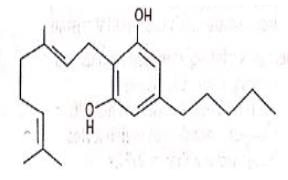Test: Drugs & Alcohol Abuse (NCERT) - Grade 12 MCQ
20 Questions MCQ Test - Test: Drugs & Alcohol Abuse (NCERT)
Which one of the following is a matching pair of a drug and its category?
Which one of the following statements is correct?
Which of the following statements is not correct?
The chemical compound whose chemical structure is given below is obtained from which plant?

Which of these is a member of the group of chemicals whose chemical structure is given below?

Which compound is formed by acetylation of morphine?
In humans, receptors for opioids are present in
The chronic use of drugs and alcohol results in
Which drug is being excessively taken by some sportspersons nowadays?
Which of the following plants possess hallucinogenicproperties?
Which drug is used as medicine to help patients cope with depression and insomnia?
The intravenous drug abusers are more likely to develop
Which one of the following is an opiate narcotic?
In which age group, Drug addiction is a major problem?
















